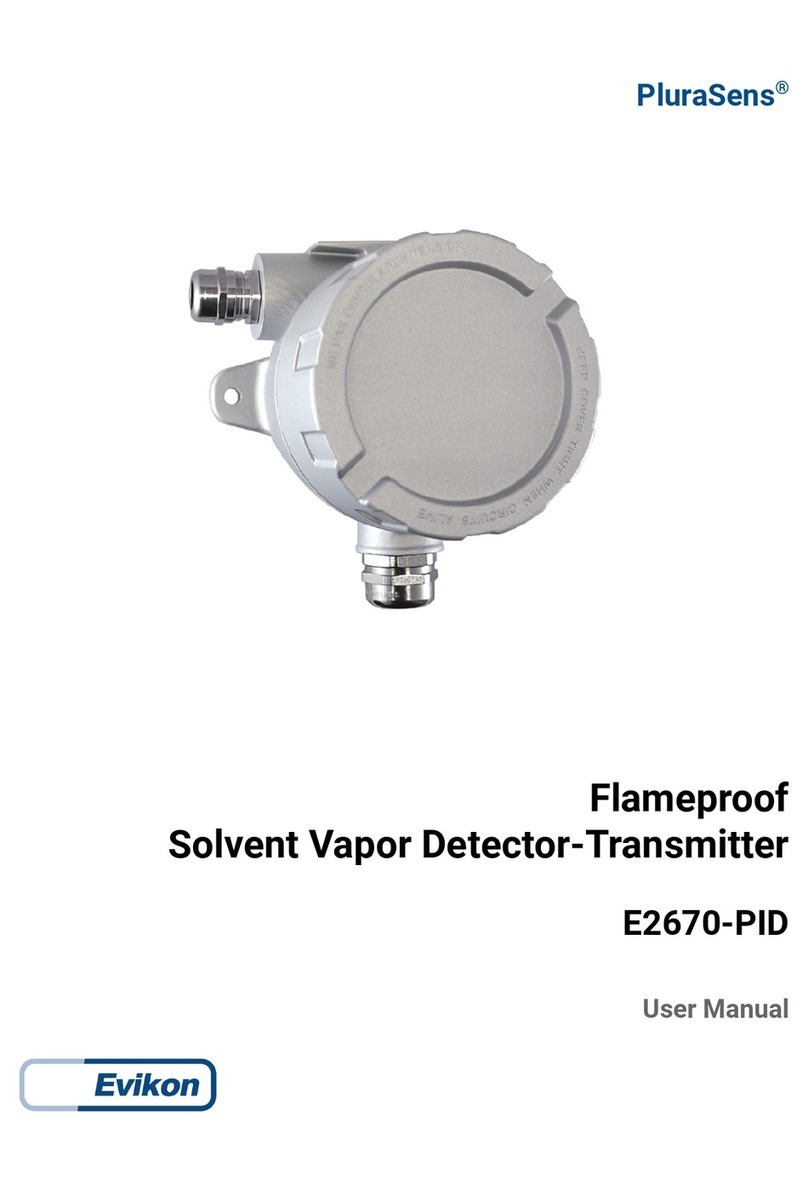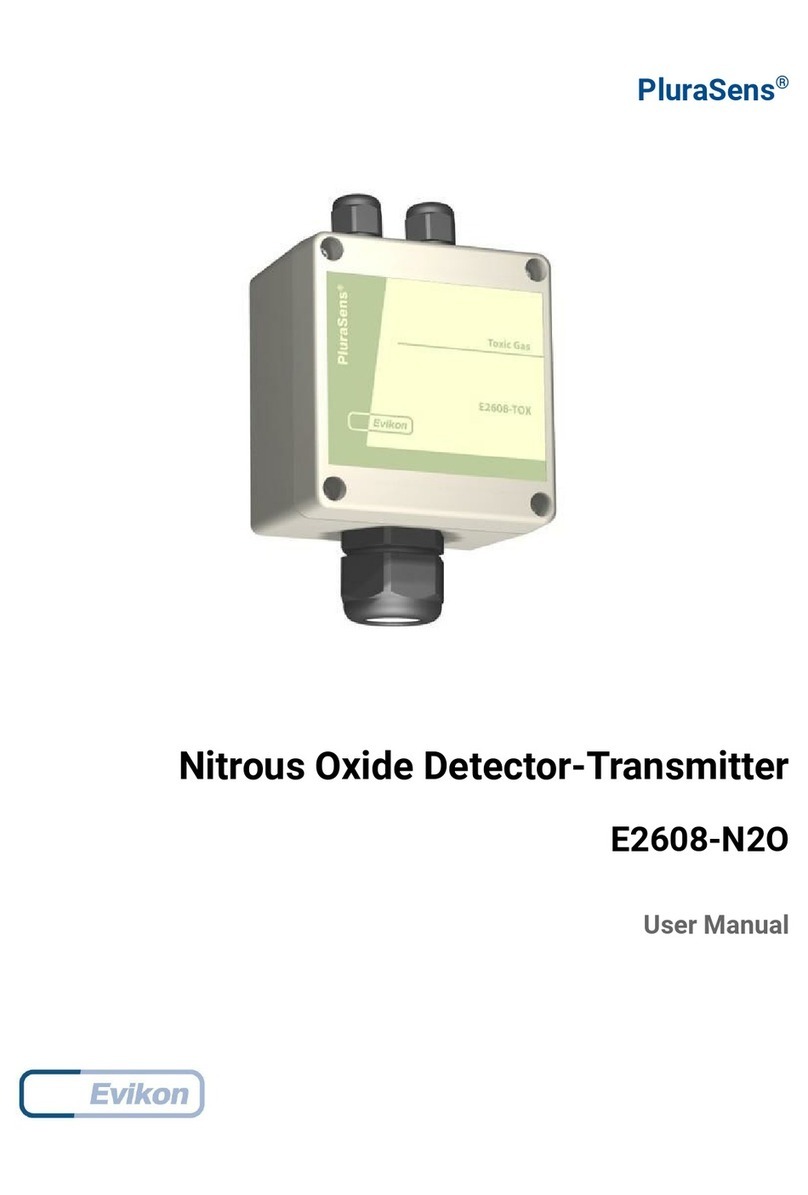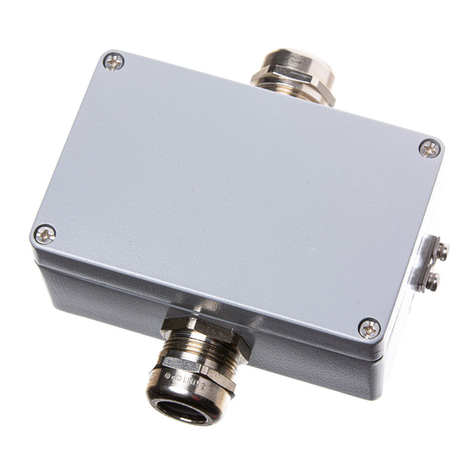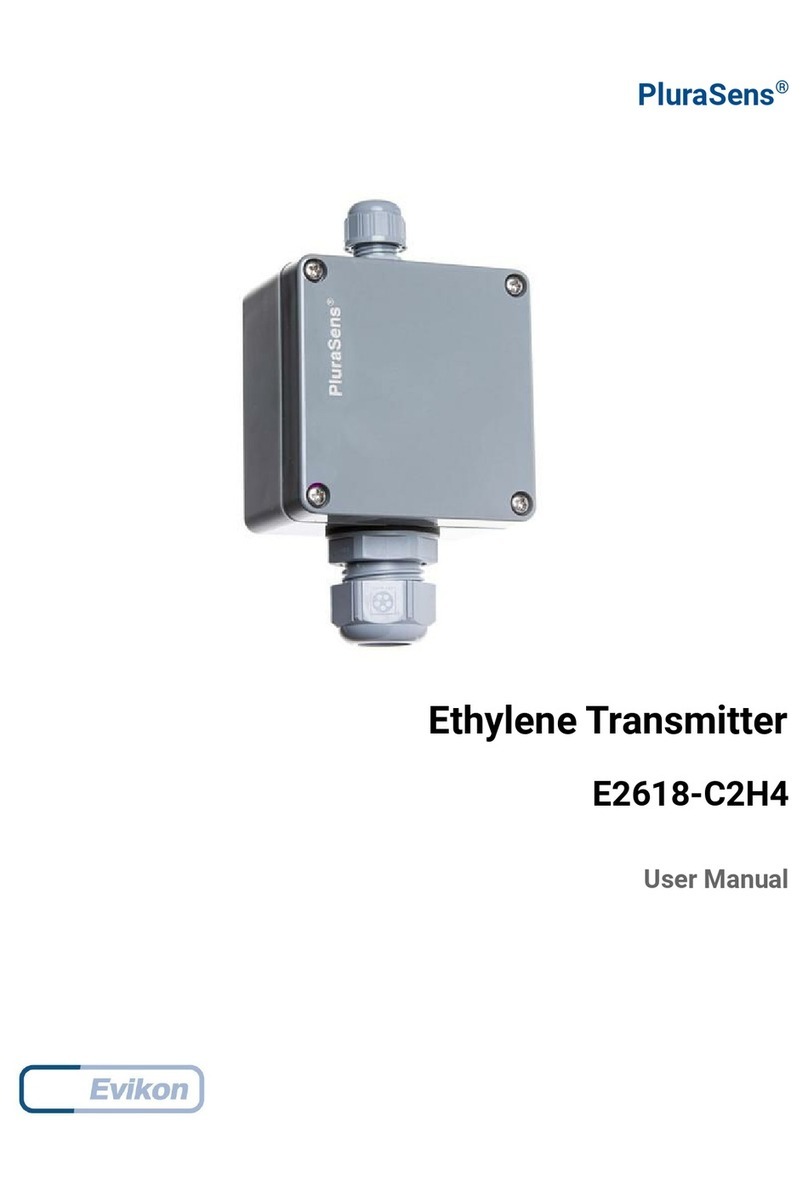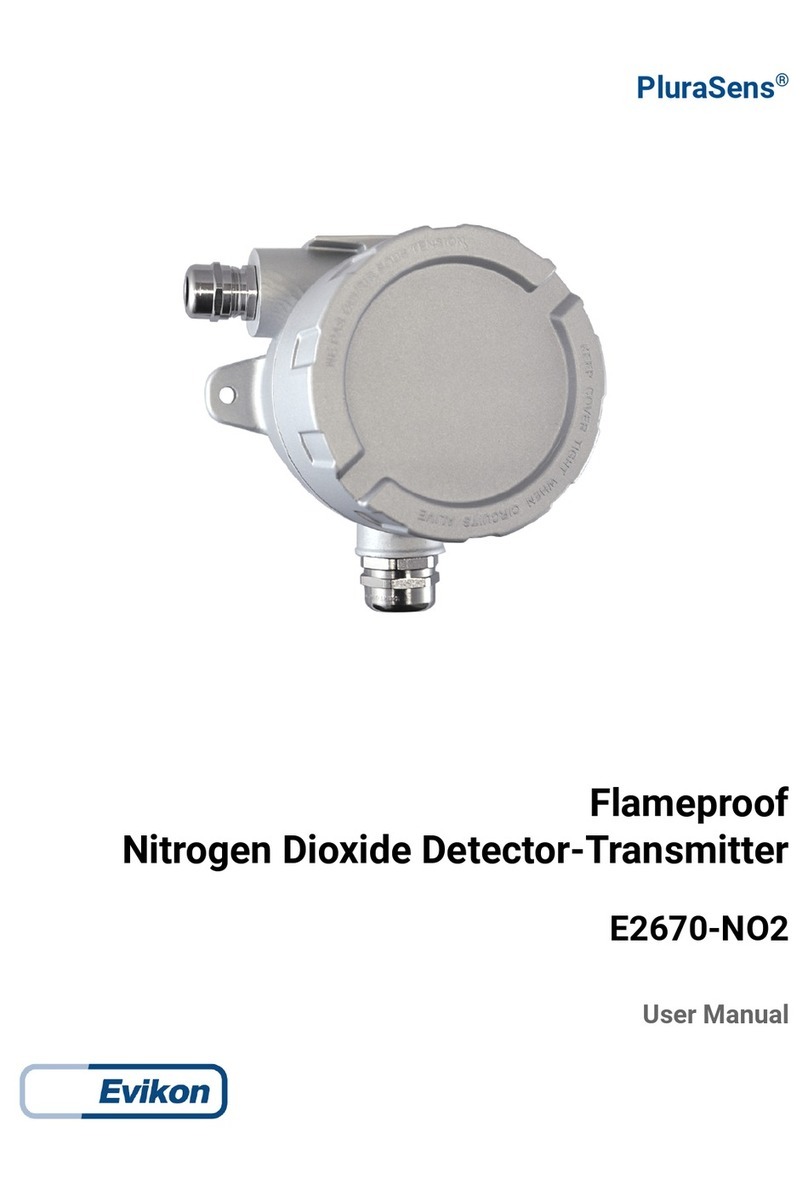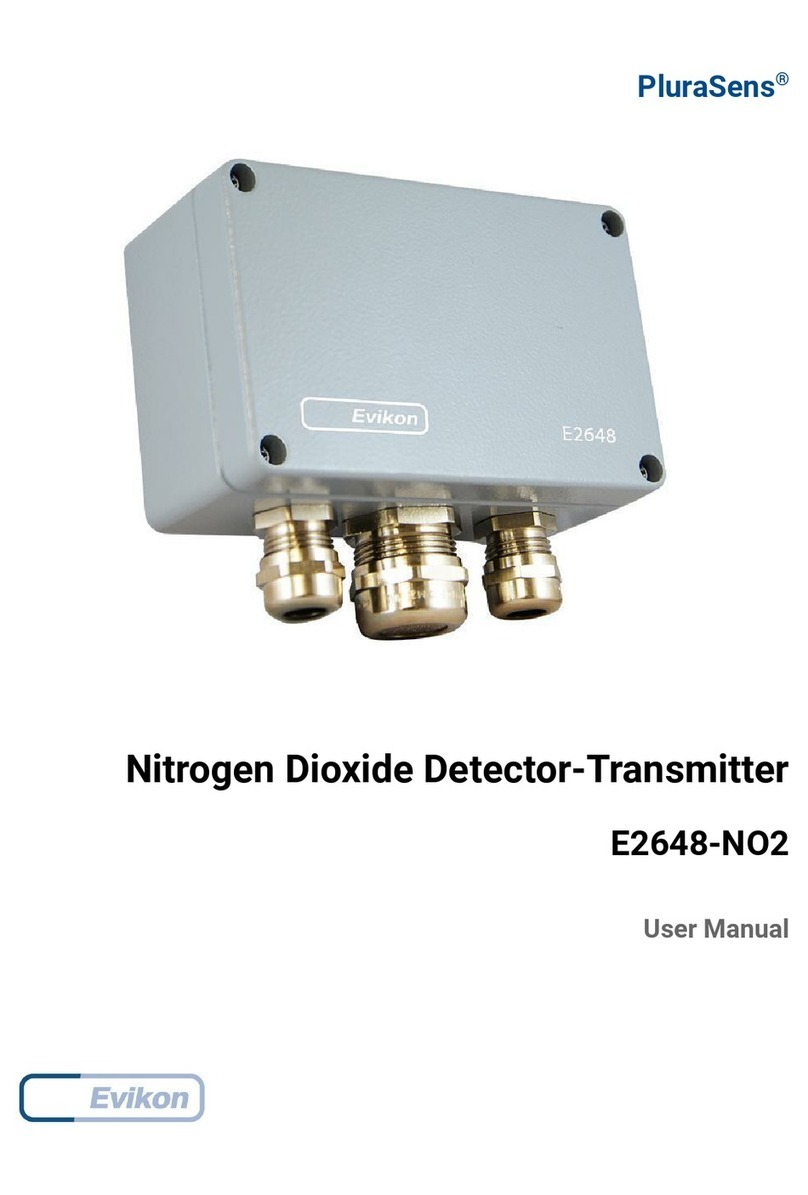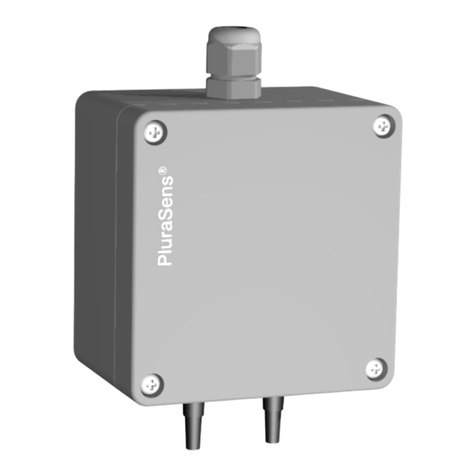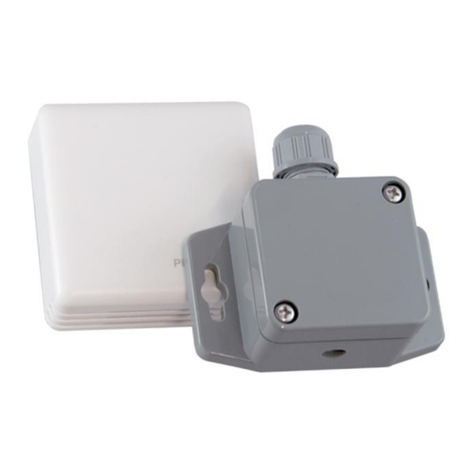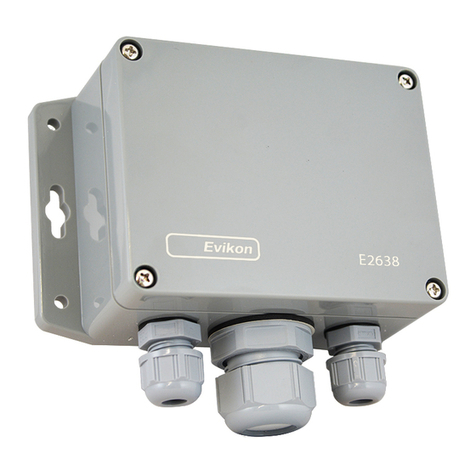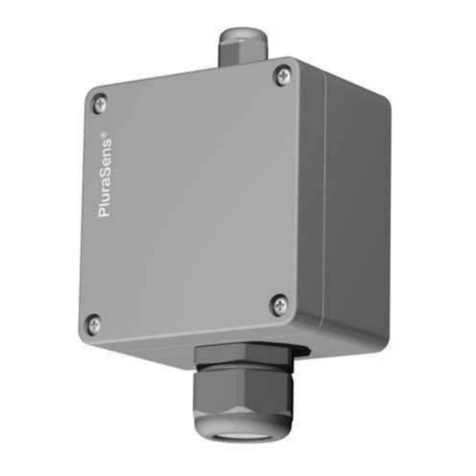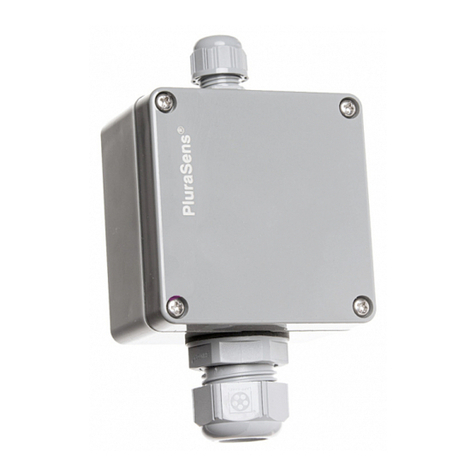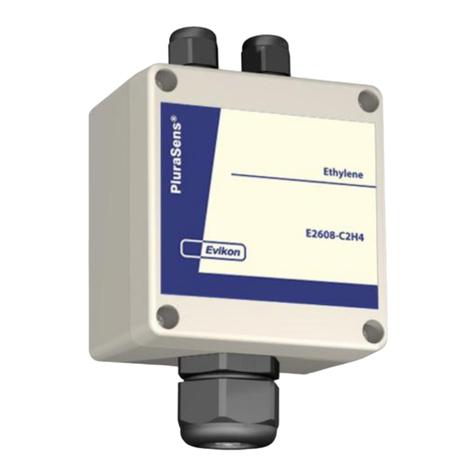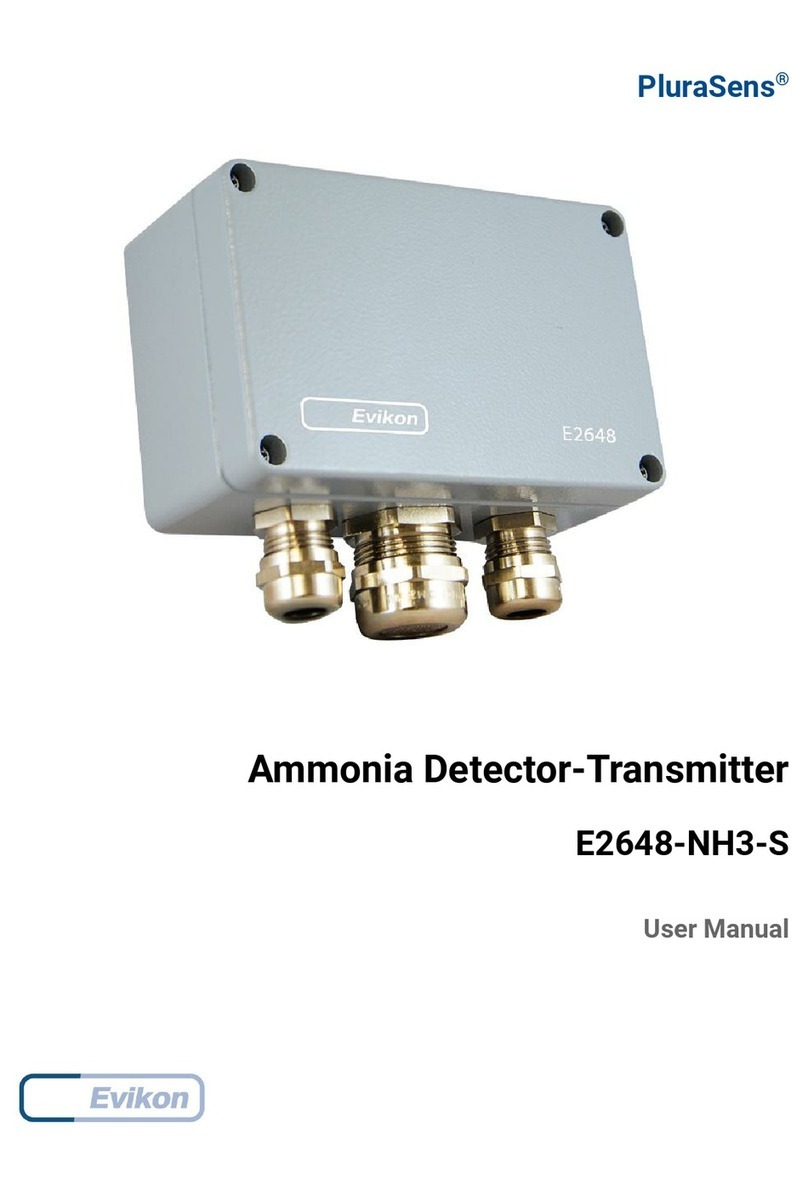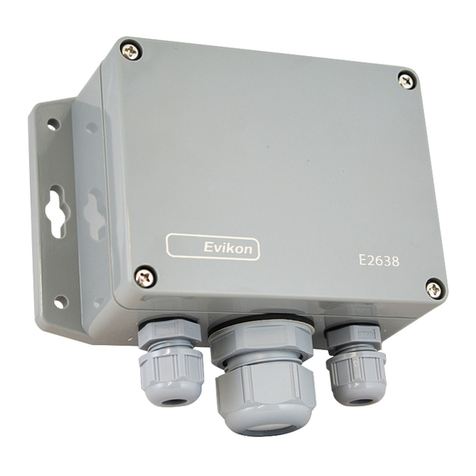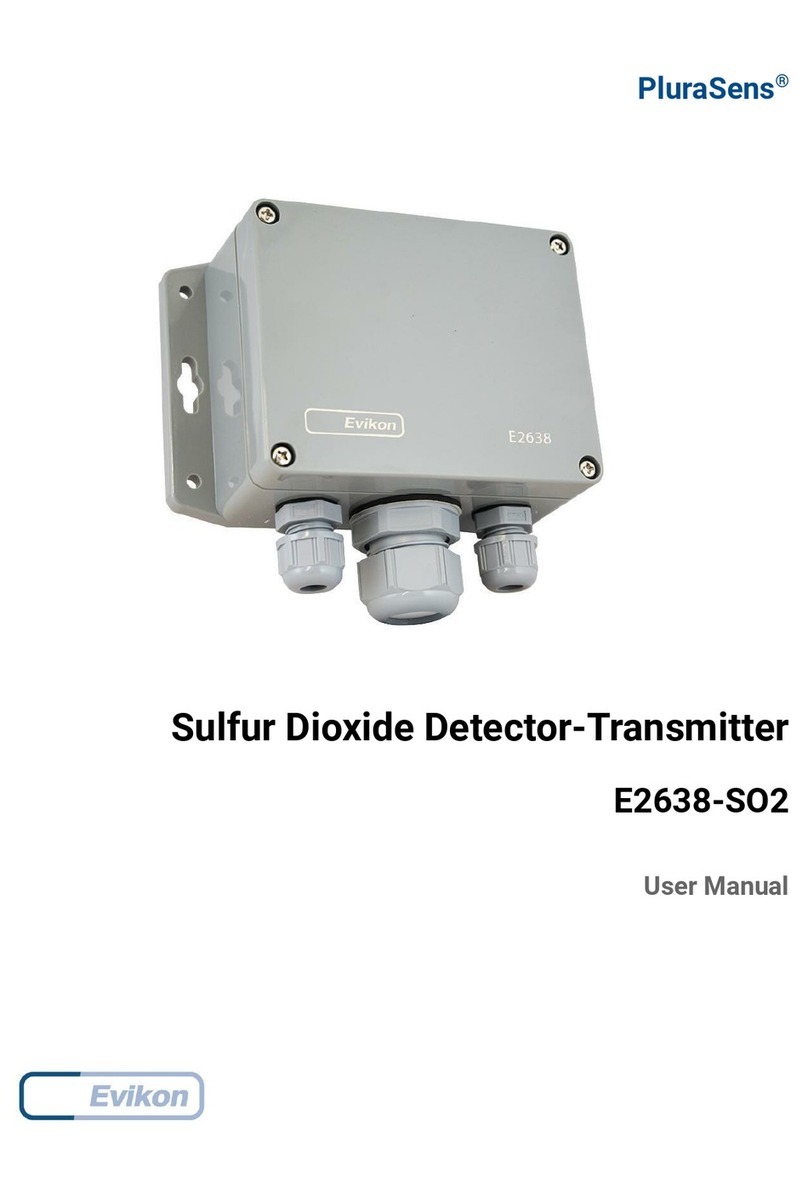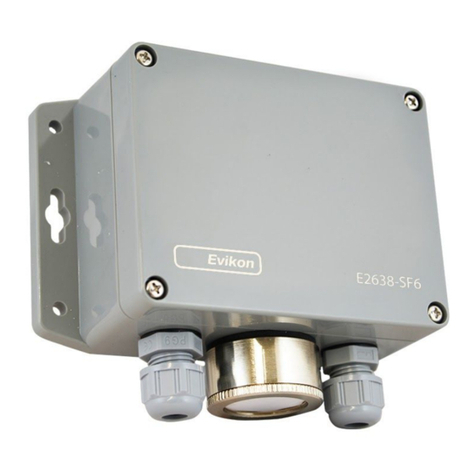E2638 series transmitters belong to the new PluraSens® family of multifunctional
measurement instruments. The instruments utilise gas sensors of various types with
excellent repeatability, stability and long lifetime
E2 38 series provides two independent analog outputs OUT1 and OUT2, user-
selectable to 4-20 mA or 0-10 V, proportional either to gas concentration or temperature.
RS485 Modbus RTU digital communication interface allows easy instrument
configuration and integration into various automation systems.
The device is available with attached or remote probe. The remote probe is connected
to the main unit with shielded cable. Default connection cable length is 3 m.
A design with LCD is available as an option.
The version of your transmitter is marked on the package.
Safety requirements
Always adhere to the safety provisions applicable in the country of use.
Do not perform any maintenance operation with the power on. Do not let water or
foreign objects inside the device.
Operating conditions
The device should be used in explosion-safe (non ATEX -rated) indoor areas, without
aggressive gases in the atmosphere. See Specification table for more details.
Installation
There are no precise rules or standards to follow when installing the gas detectors. The
following points must be taken into account:
application (air quality control or leakage detection),
properties of the space under investigation (room geometry, direction and velocity of
air flows etc),
detected gas (relative density to air, whether the gas is flammable, or toxiс, or oxygen
displacing),
safety: strong vibrations, mechanical shock, and the sources of strong
electromagnetic interference should be avoided,
the device should be accessible for maintenance and repair.
For early leakage detection install the sensor as close as possible to the potential
leakage sources (flanges, valves, pressure reducers, pumps, etc), taking into
consideration other points listed above. For general area monitoring without definite
leakage sources, the detectors should be distributed evenly in the room. For personal
safety control the detectors are installed in the breathing zone (at the height of the head
of people or animals). Recommended sensor position is vertical, pointing downwards.
See Installation guidelines section on the next page for more information.
The device is fixed on the wall using four round holes or two key slots (see dimensional
drawing below).
Connections
1. Unscrew four lid screws and detach the lid from the transmitter. Use two M1 cable
glands to pass the cables of the power supply and of the external devices.
2. Plug the power cable and connect the analog outputs and/or digital interface
terminals to the relevant devices according to the connection diagram.
The screwless quick connect spring terminals on the E2 38 series devices are
suitable for a wide range of wires with cross-section 0,2...1,5 mm2. We recommend
to strip the wire end by 8...9 mm and tin it, or to use the wire end sleeves.
To connect the wire, insert the wire end into terminal hole. To disconnect, push the
spring loaded terminal lever, pull the wire out, and release the lever.
Use twisted pair cable, e.g. LiYY TP 2×2×0,5 mm2 or CAT 5, to connect the device
to RS485 network. Use one pair for A and B wires and the second pair for common
0 V and power +U wires to connect the transmitter to Fieldbus network. Respect
polarity. Overall length of all connections via RS485 interface should not exceed
1200 m. The type of each analog output can be independently changed between 4-
20 mA and 0-10 V with jumpers J1 (OUT1) and J2 (OUT2).
With closed jumper the output is 0-10 V, with open jumper the output is 4-20 mA.
By default both outputs OUT1 and OUT2 are assigned to gas concentration. The
device has built-in temperature sensor which may be tied to any of the outputs.
The output assignments and scales can be changed by Modbus commands.
NOTE If you use a version with LCD, only OUT1 is available.
3. Turn on the power. The sensor heating up may take up to five minutes after
switching on. A LED placed on the PCB of the device allows to control the
connection process. The LED response to different processes is presented in the
table below.
Process LED mode
Sensor heating period Blinking 0.5 Hz (50% on, 50% off)
Sensor absence or malfunction Blinking 0.5 Hz (90% off, 10% on)
Modbus response The signal is modulated with short on-off pulses,
even single Modbus cycle is traceable*
Normal measurement Continuous light
4. Make sure that the detector is properly fixed, the external devices connected,
power on and control LED is constantly lit. Make certain that the cable glands are
properly tightened to ensure the conformity to IP 5 protection class. Place the lid
back and fix it with the screws. The device is ready to use.
It is recommended to keep the transmitter powered constantly, except for periods of
maintenance and calibration, deplacement etc.
Sensor probe andling
The E2 38 series transmitters are available with remote probe (see drawing below for
dimensions). The remote probe is connected to the main unit with shielded cable.
Default connection cable length is 3 m. The sensor probes of all types are equipped with
a hydrophobic microporous PTFE filter to protect the sensor from dust, dirt and water
drops. The filter may be replaced if it gets strongly contaminated. To replace the PTFE
filter, unscrew the M25 nut and remove the old filter. Place a new filter into the nut
and tighten it again.
NB! Never stab or press the filter near its centre where the sensor is located since this
may damage the sensor.
The recommended orientation of sensor probe is vertical with the sensor tip pointing
downwards. This prevents possible accumulation of condensed water on the sensor
protection filter. The horizontal orientation is also suitable. Avoid upward position of the
sensor tip.
Configuring
Gas transmitters E2 38 share all functionalities of the PluraSens® multifunctional
transmitter platform. The features and options include:
- digital output change rate limiting filter
- digital integrating (averaging) filter
- temperature measurement channel with internal sensor
- free assignment of each analog output to chosen parameter
- flexible setting of analog output scales for each output
- output shift and slope adjustment for calibration
- Modbus controlled forced state option for analog outputs .
E2 38 can be configured through its RS485 interface by Modbus RTU commands. A
standard configuration kit includes Model E1087 USB-EIA485 converter and a software
pack. Please contact your Seller or the Manufacturer for more information.
Return to default settings
To reset the device’s Slave ID, baudrate and sbit number to factory settings, proceed as
follows:
1. De-energize the device
2. Connect the J3 jumper
3. Turn on the device
4. De-energize the device
5. Disconnect the J3 jumper
. Turn on the device
RS485 communication interface
See Annex 1
36
77
Ø35...36 Ø50
120°
Ø 65 80
32 7
Ø34 max
Hole
35
OUT1
OUT2
0V
A
B
+U
J3
J1 J2
Field us
Controller
Supply
Power
Control LED
Input 1 4-20 mA / 0-10 V
Input 4-20 mA / 0-10 V2
0V / GND
0V
+24V
J1: OUT1 type (open: 4-20 mA; closed: 0-10 V)
J : OUT type2 2 (open: 4-20 mA; closed: 0-10 V)
SENSOR
145
115
90
66
~140
55
130
E2638
M 61
M25
30
